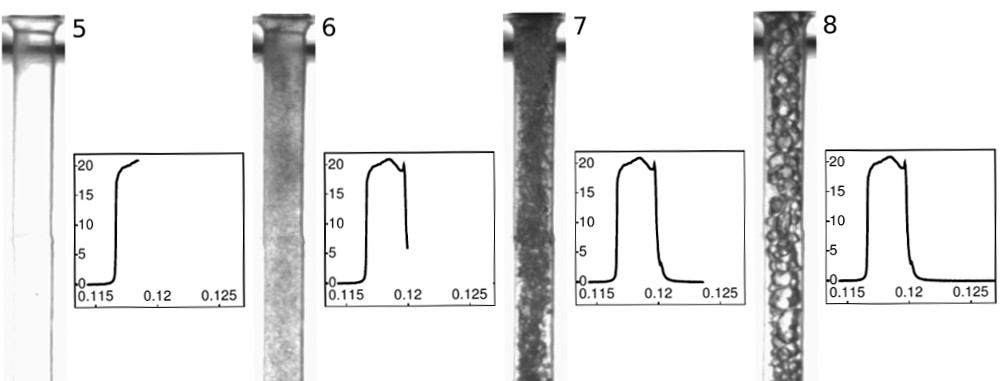
- Full title Evaluation of multi-phase effects during water hammer occurrence
- Funding entity von Karman Institute for Fluid Dynamics
- Researchers Marcos Lema Rodríguez, Fernando López Peña, Richard J Duro Fernández, Anne Gosset
- Start date 24/02/2011
- End date 23/08/2011
- Universidade da Coruña
- Von Karman Institute Alumni Association
Description
In this project, a water hammer was studied experimentally and numerically, both in terms of cavitation and gas desorption. Both occur in aerospace propulsion systems using liquid fuels. These systems experience the multi-phase water hammer phenomenon, which cause serious pressure increases that cannot be ignored during the design phase.
In creating an experimental database to understand water hammer behaviour in propulsion systems, the aim was to improve physical models implemented in CFD codes. It was achieved by designing an experimental installation that reproduced the propulsion system of a satellite, using inert fluids under controlled conditions in the laboratory. It was concluded that the influence of gas released during water hammer occurrence is extremely important to the whole process. This has to do with increased fluid compressibility and speed of sound reduction by a growing quantity of non-condensable gas in the liquid-gas mixture. The two-phase flow behaviour was characterised by visualisation with a high speed camera. We could observe that the liquid front is preceded by a mixture of liquid, vapour and non-condensable gas, and expansion waves induced a separation of liquid column.
The resulting experimental data base was contrasted with predictions from a numerical code commonly used to assess propulsion systems. As a result, it was concluded that it is necessary to improve aspects such as speed of sound calculations in a liquid with a dissolved gas and non-stationary friction modelling.
This project was done in collaboration with the von Karman Institute (Belgium) and was funded by the European Space Research and Technology Centre of the European Space Agency (Netherlands).